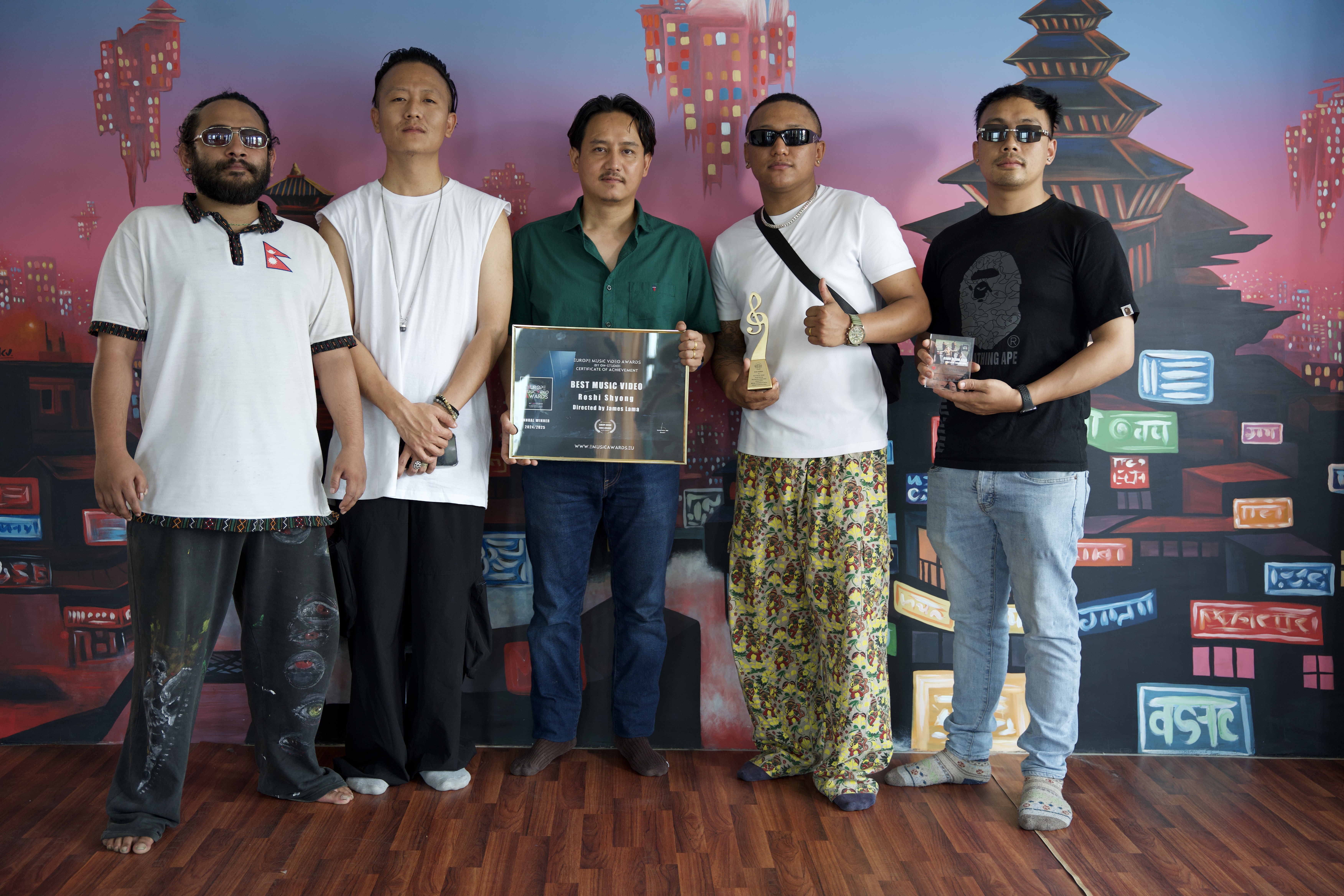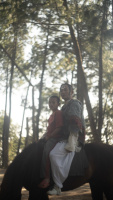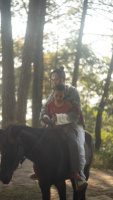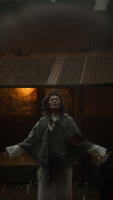The Roshi Shyong music video, filmed in a real Himalayan monastery with actual monks, won our annual Best Music Video Award and Audience Choice Award - twice! This project blends deep-rooted Nepali culture with modern artistic expression, resonating with both juries and global audiences.
"Art isn’t meant to be understood through language, it’s meant to be felt through the heart," say the creators, whose work has sparked conversations both at home and abroad.
This article is written by Zu, the Creative Director and Music Producer of Roshi Shyong, with Director James Lama.
Winning & Recognition
It’s a very special feeling to have our hard work recognized across continents by receiving the award for Best Music Video of the Year at the Europe Music Video Awards (EMVA). This year, we won five awards at film festivals around the world, including four different nominations. This is incredibly motivating for us, coming from a small country, we’ve stayed true to our roots, trying not to be anyone but ourselves. What makes this even more special is that this is our very first music video as a team, created with the support of the Maïa Baudelaire Fondation, a French organization that generously chose to support Nepali musicians. We are truly proud of our work. We believed it deserved a global platform, so we submitted it to various film festivals, and here we are, winning both the Best Music Video and the Audience Choice Award at EMVA 2025.
This track is co produced by TrippinJ’ on ‘Inspiration Behind Roshi Shyong
Inspiration Behind Roshi Shyong
"Roshi" was inspired by a song written by Roshi Lama, who composed lyrics about representing his home village in his native Tamang language. Nepal is an incredibly rich and diverse country, home to 142 distinct ethnic groups, each with deep-rooted histories and cultures. I am the music producer and creative director of this project, working under the artist name Zu. I met Roshi Lama during a music residency program at the Maïa Baudelaire Fondation, where the idea for this project began. From there, I took the initiative to bring the project to life, producing the music, assembling the team, and directing the overall creative vision. James Lama, the director of the music video, contributed his incredible filmmaking skills, which played a vital role in bringing the story to the screen. Coming from a Himalayan background myself, I felt a strong connection to this song. Its focus on the Tamang people, the Himalayan region, and Buddhism resonated deeply with me, which is why I felt compelled to take on the project.
Community Response
We were always aware that this project wasn’t created for the local scene, as Nepal’s art community is still small and not everyone may fully understand or connect with this kind of artistic expression. From the very beginning, I knew I wanted to take an international approach & take risks out of our comfort zone rather than following a commercial path. That said, many locals who did watch our video appreciated it—it was something fresh and new to them. However, some Buddhists were offended by certain aspects of the video, particularly our use of real monks and an actual monastery as the shooting location. We anticipated such reactions, knowing that culture is a deeply sensitive subject in Nepal. Everyone is entitled to their own opinions, and we respect that. It doesn’t discourage us, because as long as our intention is pure, which is to represent our roots, culture & people to the world.

Cultural Roots & Universal Emotion
"This film feels deeply rooted in your culture, but its emotion is universal."
Thank you to the EMVA for this incredible feedback. As artists, this speaks directly to the core belief we hold: art is universal—it transcends geographical boundaries, cultural differences, and language barriers.
Art has always been powerful. It's not something that needs to be understood intellectually, but rather it’s meant to be felt. And we believe that’s exactly what happened with this project. Even though the music comes from a different language, culture, and landscape, it still found a way to touch people’s hearts & souls and for that, we’re truly grateful.
Working with Monks & Villagers
During the shoot, it was very easy to direct the real monks, as their characters closely resonated with their daily lives. However, what impressed everyone in the crew the most was the main child actor, who also happens to be a real monk. He is someone who chose to join the monastery on his own and had long dreamed of being in a video someday. He wasn’t shy at all—on the contrary, he was incredibly confident, as if he had always been in front of the camera. His presence was calm and grounding. Shoots can be hectic, even for adults, and this particular one at the monastery lasted more than 18 hours straight. But the little monk never complained or showed any signs of fatigue. He remained composed, almost in a zen-like state, patiently waiting for his turn.
He was truly exceptional, and everyone was amazed by his pure and innocent presence. It was heartwarming to learn later that, after the video was released, he became a bit of a hero within the monastery. Everyone praised him and felt very proud, especially his friends.
Filming in a Real Monastery
Shooting inside a real monastery was one of the most challenging parts of this project. We had to rely on our connections and spend weeks, even months, in follow-up meetings with the monastery authorities, helping them understand that our vision came from a place of genuine respect and a pure intention to represent our culture and roots. It was especially difficult because in Nepal, cultural and religious matters are extremely sensitive, and the monastery had to be sure they wouldn’t face any backlash. Thankfully, we were able to earn their trust and clearly communicate our intentions, which ultimately made this project possible. Being able to film inside the monastery became one of the greatest advantages of the entire project, from the visual aesthetics to the spiritual energy of the space, and the naturally beautiful lighting that the monastery offered. It brought an authenticity and depth we could not have achieved otherwise.
Challenges
During the Roshi Shyong music video shoot, we faced many challenges, but at the same time, everything seemed to fall into place in all aspects, from music to video production. I consider that a blessing. I knew this project was going to be something special based on how things were unfolding during the shoot, as I was also mentioning to the team that we are aligned with the universe. But in art, I believe there's never 100% satisfaction—you always feel there’s room for improvement. That’s important. It keeps us grounded and pushes us to grow and evolve in future projects—and that’s exactly what we plan to do.

Nature & Landscape Use
Roshi is the name of the river that represents the Tamang people. Although we couldn't shoot at the Roshi River, we still wanted to include a river in the story to highlight its significance. The forest setting felt ideal, as the parents in the video collect and sell wood, an occupation that reflects the real-life livelihoods of many people in rural Nepal.

Final Levitation Scene
This scene is inspired by the Bible, specifically the resurrection of Jesus. It was an important shot to end the story, marking a turning point when the boy is revealed to be a super being, witnessed by all the other monks. In addition to directing, I (James Lama) also worked as the CG artist. I used a green screen along with software like Blender and After Effects to create this shot. Coming from a Christian background, I learned a lot about monks and their customs during this project. It was a truly wonderful and enriching experience.

Future Projects
We have plans to create more projects that represent our roots. In 2024, I (Zu) started a project called Maïanāda, where I travel to rural areas of Nepal in an old-fashioned way—often through difficult roads—to reach places where culture, traditions, and heritage are still deeply preserved by the people. With my team, we go there to capture authentic sounds and visuals, then create music with it that bridges the gap between the past & the present, traditional & modernity. We’re planning to shoot more promising films this year using the music we’ve made through this journey.
https://www.instagram.com/maianadafondation/
My ultimate goal with the Roshi Shyong project & with any future project is to connect with people by representing our roots, while also blending them with modern elements and influences from other cultures around the world. The message I want to share is simple: we are one, and we can still connect through art, despite differences in language, geography, or culture. At the end of the day, we’re all human, with the same core human instinct, which is to connect with one another. And I believe that’s one of the most powerful things in the world, something most people often overlook.
EMVA 2025



